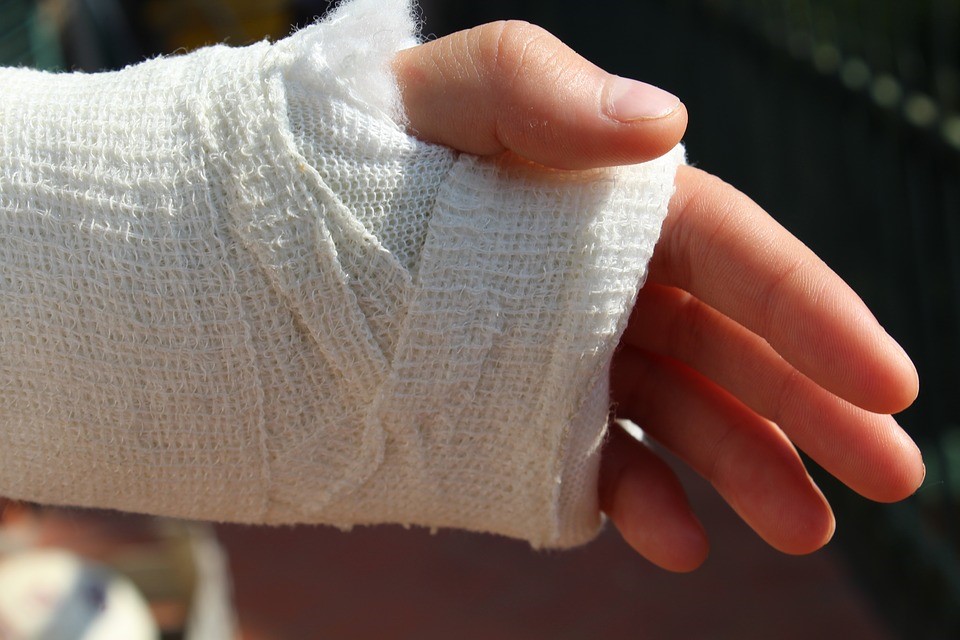
Fractures of the upper limb: what it looks like and how to deal with a broken arm
A broken arm involves one or more of the three bones in your arm — the ulna, radius and humerus. One of the most common causes of a broken arm is falling onto an outstretched hand
If you think you or your child has broken an arm, seek prompt medical attention.
It’s important to treat a fracture as soon as possible for proper healing.
Treatment depends on the site and severity of the injury.
A simple break might be treated with a sling, ice and rest. However, the bone may require realignment (reduction) in the emergency room.
A more complicated break might require surgery to realign the broken bone and to implant wires, plates, nails or screws to keep the bone in place during healing.
Did I break my arm? Symptoms
A snap or cracking sound might be your first indication you’ve broken an arm. Signs and symptoms include:
- Severe pain, which might increase with movement
- Swelling
- Bruising
- Deformity, such as a bent arm or wrist
- Inability to turn your arm from palm up to palm down or vice versa
When to see a doctor
If you have enough pain in your arm that you can’t use it normally, see a doctor right away.
The same applies to your child.
Delays in diagnosis and treatment of a broken arm, especially for children, who heal faster than adults do, can lead to poor healing.
Causes of a broken arm:
Common causes for a broken arm include:
- Falls. Falling onto an outstretched hand or elbow is the most common cause of a broken arm.
- Sports injuries. Direct blows and injuries on the field or court cause all types of arm fractures.
- Significant trauma. Any of your arm bones can break during a car accident, bike accident or other direct trauma.
- Child abuse. In children, a broken arm might be the result of child abuse.
Risk factors
Certain medical conditions or physical activities can increase the risk of a broken arm.
- Certain sports
Any sport that involves physical contact or increases your risk of falling — including football, soccer, gymnastics, skiing and skateboarding — also increases the risk of a broken arm.
- Bone abnormalities
Conditions that weaken bones, such as osteoporosis and bone tumors, increase your risk of a broken arm. This type of break is known as a pathological fracture.
Complications
The prognosis for most arm fractures is very good if treated early. But complications can include:
- Uneven growth. Because a child’s arm bones are still growing, a fracture in the area where growth occurs near each end of a long bone (growth plate) can interfere with that bone’s growth.
- Osteoarthritis. Fractures that extend into a joint can cause arthritis there years later.
- Stiffness. The immobilization required to heal a fracture in the upper arm bone can sometimes result in painfully limited range of motion of the elbow or shoulder.
- Bone infection. If a part of your broken bone protrudes through your skin, it can be exposed to germs that can cause infection. Prompt treatment of this type of fracture is critical.
- Nerve or blood vessel injury. If the upper arm bone (humerus) fractures into two or more pieces, the jagged ends can injure nearby nerves and blood vessels. Seek immediate medical attention if you notice numbness or circulation problems.
- Compartment syndrome. Excessive swelling of the injured arm can cut off the blood supply to part of the arm, causing pain and numbness. Typically occurring 24 to 48 hours after the injury, compartment syndrome is a medical emergency that requires surgery.
Prevention
Although it’s impossible to prevent an accident, these tips might offer some protection against bone breakage.
- Eat for bone strength. Eat a healthy diet that includes calcium-rich foods, such as milk, yogurt and cheese, and vitamin D, which helps your body absorb calcium. You can get vitamin D from fatty fish, such as salmon; from fortified foods, such as milk and orange juice; and from sun exposure.
- Exercise for bone strength. Weight-bearing physical activity and exercises that improve balance and posture can strengthen bones and reduce the chance of a fracture. The more active and fit you are as you age, the less likely you are to fall and break a bone.
- Prevent falls. To prevent falling, wear sensible shoes. Remove home hazards that can cause you to trip, such as area rugs. Make sure your living space is well lit. Install grab bars in your bathroom and handrails on your stairways, if necessary.
- Use protective gear. Wear wrist guards for high-risk activities, such as in-line skating, snowboarding, rugby and football.
- Don’t smoke. Smoking can increase your risk of a broken arm by reducing bone mass. It also hampers healing of fractures.
Read Also:
Emergency Live Even More…Live: Download The New Free App Of Your Newspaper For IOS And Android
Bone Cysts In Children, The First Sign May Be A ‘Pathological’ Fracture
Fracture Of The Wrist: How To Recognise And Treat It
Fractures Of The Growth Plate Or Epiphyseal Detachments: What They Are And How To Treat Them
Stress Fractures: Risk Factors And Symptoms
Calcaneal Fractures: What They Are, How To Intervene
Greenstick Fractures: What They Are, What The Symptoms Are And How To Treat Them
Broken Bone First Aid: How To Recognise A Fracture And What To Do


